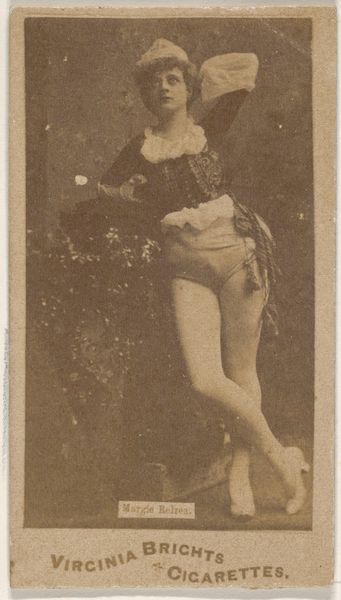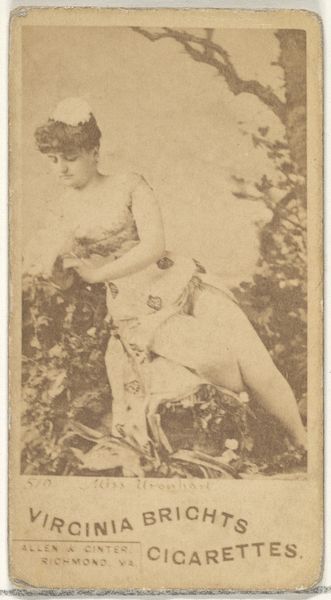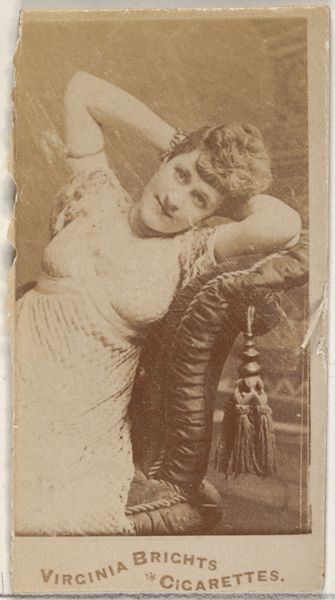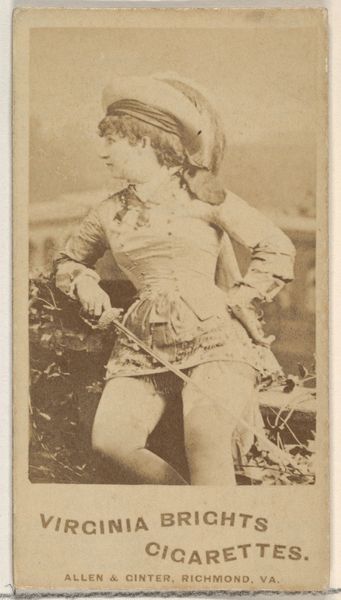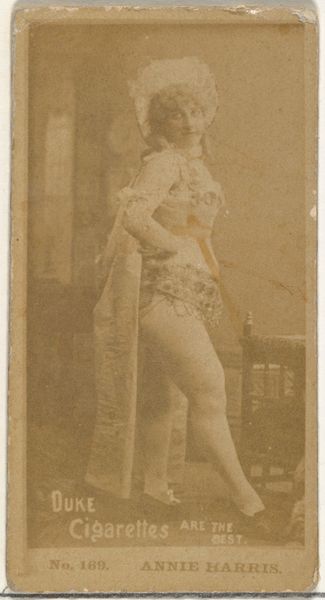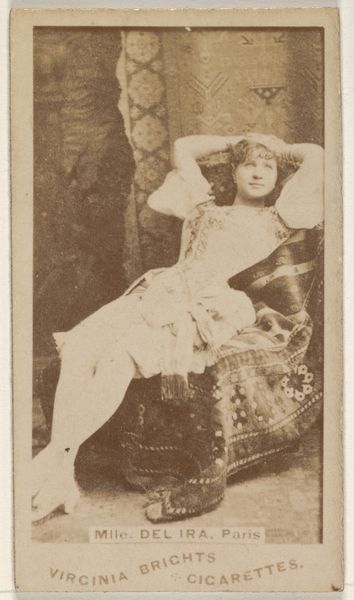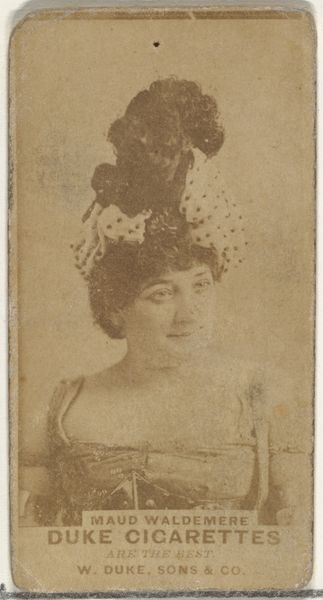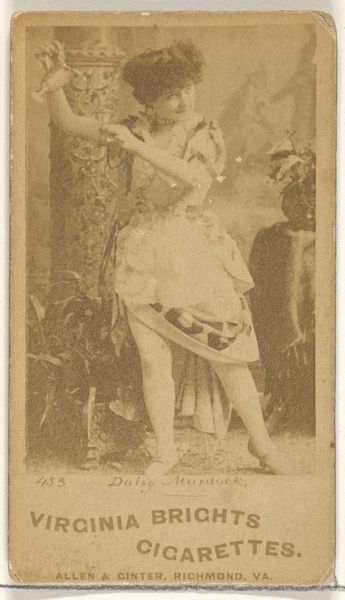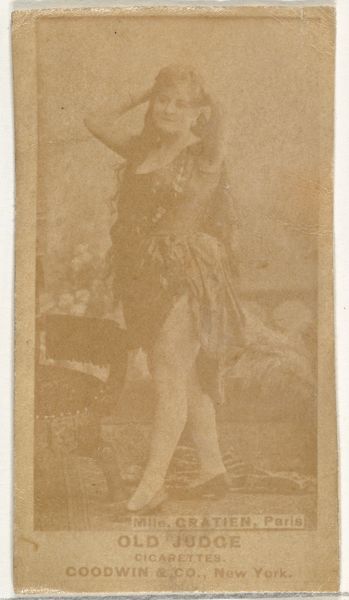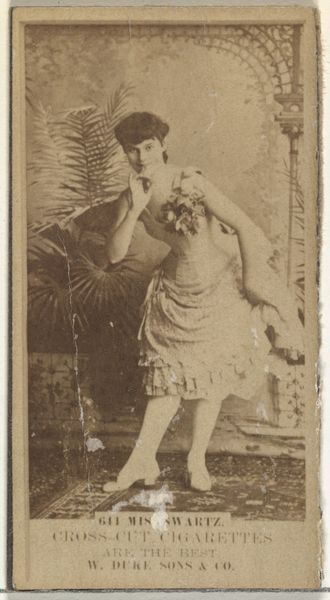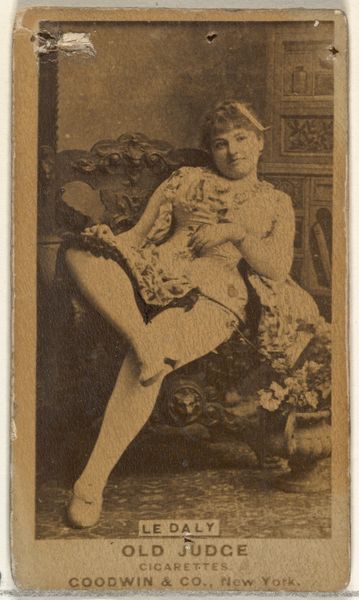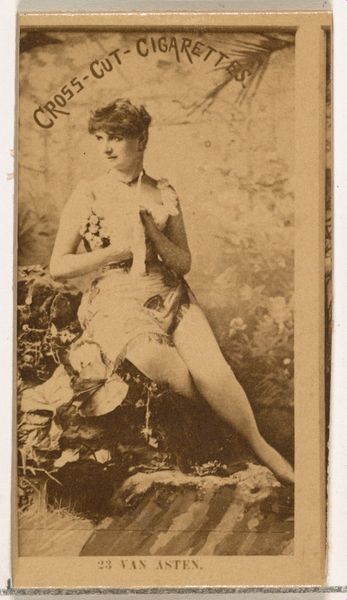
From the Actors and Actresses series (N45, Type 4) for Virginia Brights Cigarettes 1885 - 1891
0:00
0:00
drawing, print, photography
#
portrait
#
drawing
# print
#
figuration
#
photography
#
genre-painting
Dimensions: Sheet: 2 3/4 x 1 3/8 in. (7 x 3.5 cm)
Copyright: Public Domain
Curator: This card is part of Allen & Ginter’s "From the Actors and Actresses" series, dating from 1885 to 1891. These cards, like many others of the time, were originally inserts in cigarette packs. Editor: It's sepia-toned and quite small, right? At first glance, the textures jump out. You've got the feathery headpiece, what looks like ornate lace, and that layered fabric—almost suggesting a stage costume, wouldn’t you agree? Curator: Precisely. These cards served to promote both the actors and the brand. The images weren’t just portraits but aimed to capture these performers' charisma, thereby shaping their public image and cultivating consumer culture around them. Editor: It's fascinating how photography, drawing and print technologies are all converging in the making of something disposable as a cigarette card, but carrying cultural weight all the same. Look at the care taken in the costuming, a symbol of high theatrical production now transferred to something for mass consumption. Curator: Think about how these cards circulated—passed between hands, collected, and traded. The mass reproduction democratized access to images of celebrated figures. These were tangible tokens that connected everyday people to the world of celebrity. Editor: But it is all promotional and commercial; still it presents us with an echo of labor and the arts of theatrical design. Also the model is engaging, and the sepia tone has given it a nostalgic mood that contrasts with the brand-promotion origins. Curator: That is exactly how the image of the actress in commercial form turns out as a collectable: social, commercial, accessible. They reflect not just individual fame, but how fame itself was produced and disseminated. Editor: I like that they have also become documents about material history that show interrelations between the cultural and economic structures in those times. Curator: An incisive point, it highlights the intertwining of industry, art, and social trends during a period of rapid transformation. Editor: It leaves us to rethink how such material has also played its part in creating culture through different forms of work.
Comments
No comments
Be the first to comment and join the conversation on the ultimate creative platform.
